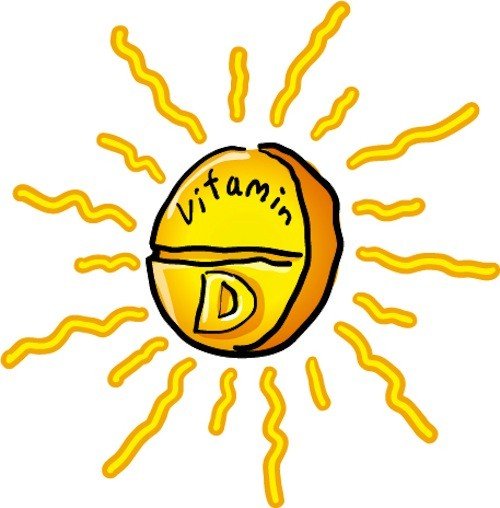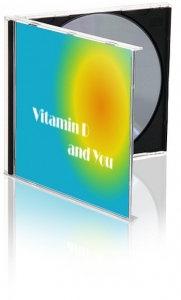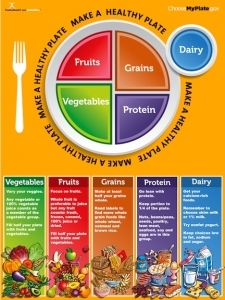Vitamin D and You!
 July is a great time to make sure that you are getting enough vitamin D while still keeping your skin cancer risk low. Not sure how to do that? Check out this excerpt from our amazing vitamin D education program... Meet Vitamin D!Vitamin D is a fat-soluble nutrient that is important for good health. Its main role is aiding calcium absorption in the body, though it also helps your immune and nervous systems.Vitamin D Deficiency:When it comes to vitamin D deficiency, the biggest issue lies in your bones. Since vitamin D makes it possible for your body to absorb calcium, when you don’t have enough vitamin D, you might not be able to absorb that calcium. This can lead to weak, brittle, soft, and even thin bones. When this happens to children, it prompts a condition called rickets. An adult’s vitamin D deficiency leads to osteomalacia. When bones can’t get enough calcium, it can also lead to osteoporosis.Vitamin D Toxicity:Vitamin D toxicity is very rare, but it is possible. Signs of vitamin D toxicity include nausea and vomiting, constipation, reduced appetite, weight loss, and weakness.Evaluate Your Vitamin D Needs:
July is a great time to make sure that you are getting enough vitamin D while still keeping your skin cancer risk low. Not sure how to do that? Check out this excerpt from our amazing vitamin D education program... Meet Vitamin D!Vitamin D is a fat-soluble nutrient that is important for good health. Its main role is aiding calcium absorption in the body, though it also helps your immune and nervous systems.Vitamin D Deficiency:When it comes to vitamin D deficiency, the biggest issue lies in your bones. Since vitamin D makes it possible for your body to absorb calcium, when you don’t have enough vitamin D, you might not be able to absorb that calcium. This can lead to weak, brittle, soft, and even thin bones. When this happens to children, it prompts a condition called rickets. An adult’s vitamin D deficiency leads to osteomalacia. When bones can’t get enough calcium, it can also lead to osteoporosis.Vitamin D Toxicity:Vitamin D toxicity is very rare, but it is possible. Signs of vitamin D toxicity include nausea and vomiting, constipation, reduced appetite, weight loss, and weakness.Evaluate Your Vitamin D Needs:
- Most Americans don’t get enough vitamin D. The Dietary Guidelines for Americans have labeled it a “nutrient of concern” because most people aren’t getting nearly the vitamin D they need. In fact, the guidelines state that intake of this nutrient is low enough to be a public health concern.
- It’s harder for some people to get enough vitamin D than others. Those people include...
- African Americans
- Hispanics
- Older people
- People who are obese
- People with high blood pressure or high LDL cholesterol levels
- Most adults need 600 IU of Vitamin D daily and should be careful to get no more than 4,000 IU per day.
Sources of Vitamin D:
- Food is not always the best source of vitamin D, especially naturally-occurring vitamin D. Fatty fish like tuna, salmon, and mackerel are some of the best natural sources of vitamin D, as is cod liver oil.
- Many common foods are fortified with vitamin D. These foods include most milks and breakfast cereals.
- The ultraviolet rays in sunlight prompt your body to start producing vitamin D. However, sunshine through a window does not offer the necessary prompts that make your body start forming vitamin D. You must be outside in order to get the effects.
- Balance sun exposure for vitamin D with sun protection to reduce skin cancer risk.
- Vitamin D supplements usually contain either vitamin D2 or vitamin D3. Both of these supplements work well in your body and are equally effective at curing rickets.
Looking for more? Check out these articles from our member library. (And if you haven't signed up to become a member, sign up today!)
- Low Levels of Vitamin D Linked to Heart Disease
- Vitamin D Reduces Total Mortality
- Vitamin D Deficiencies Are Growing
- New Vitamin D Guidelines
Remember, you can only access those linked articles if you are a member of the Communicating Food for Health Member Library. Registration is quick and easy, so sign up today! Or browse some of our favorite resources from the Nutrition Education Store, below...




